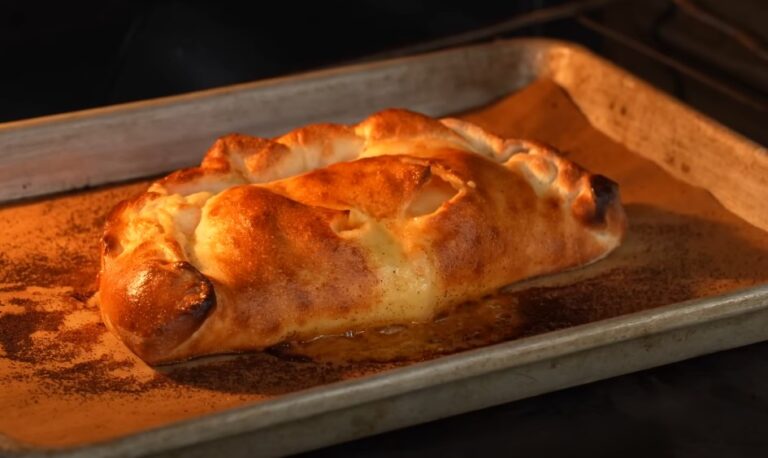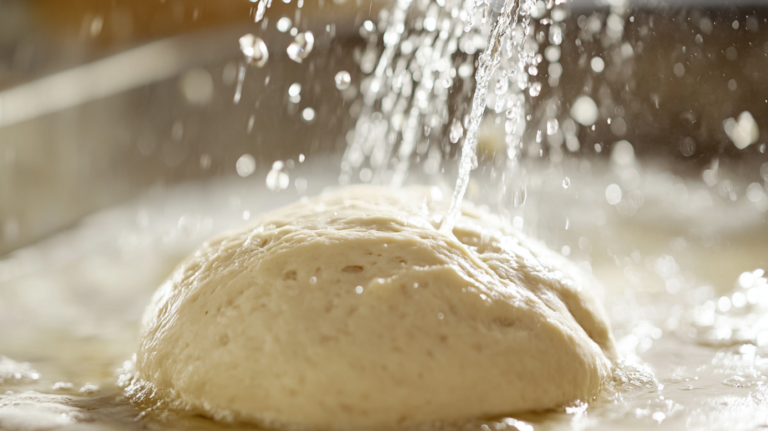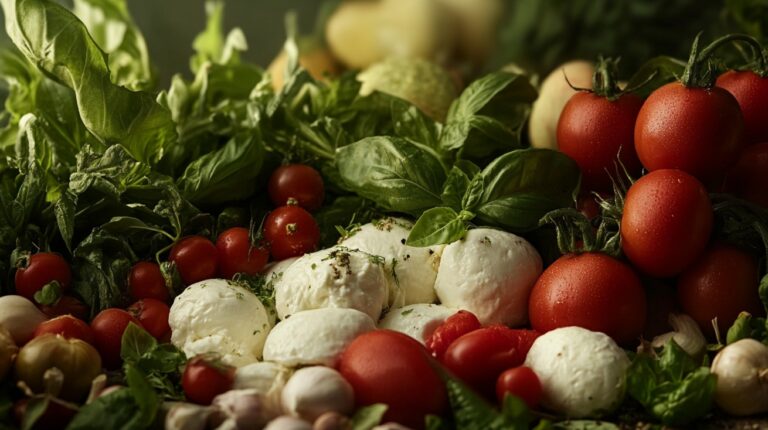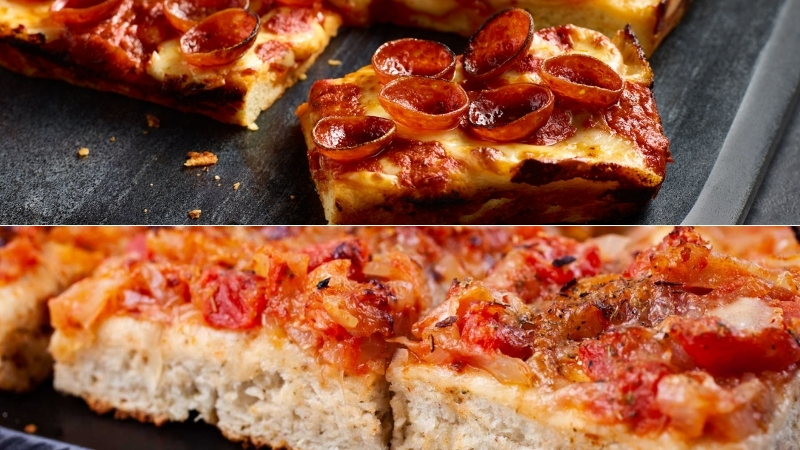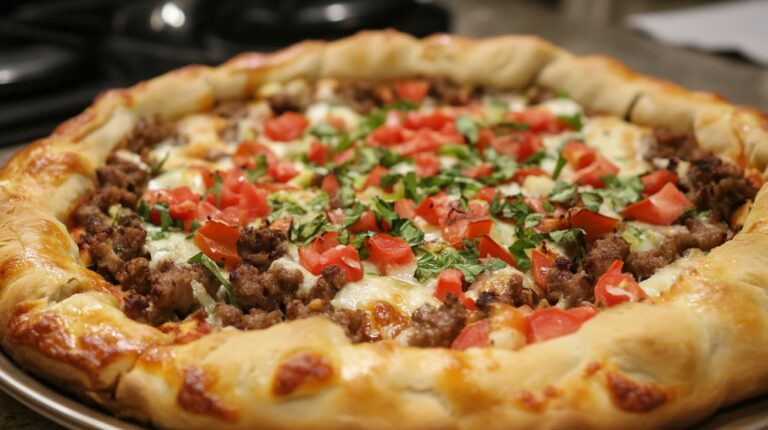Detroit-style pizza and Sicilian pizza are not the same. While both are rectangular and baked in a pan, they differ significantly in crust, texture, cheese, sauce, and cooking methods.
After making both styles at home and trying them from various pizzerias, I’ve come to understand the key differences.
To put it simply:
Detroit-style pizza is lighter, crispier, and features caramelized cheese edges. Sicilian pizza is thicker, doughier, and more bread-like.
Let’s take a closer look at how they compare.
Table of Contents
ToggleShape & Pan
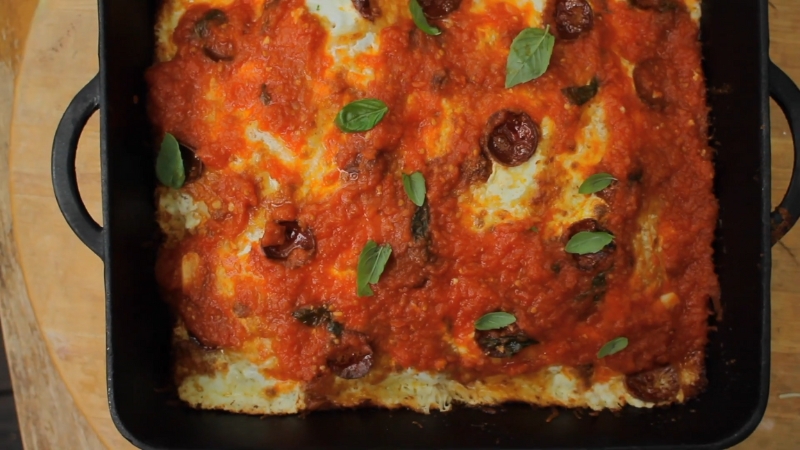
Detroit-Style
Detroit-style pizza is traditionally baked in a blue steel automotive parts pan. Yep, that’s not a joke.
The original versions were made in repurposed steel pans from the auto industry, and that’s part of what gives the crust its signature crispy edges and almost-fried bottom.
The pan is deep but not too thick, allowing the dough to rise up while also crisping up from edge to edge. The oil in the pan creates that glorious fried, golden crust.
Sicilian
Sicilian pizza, on the other hand, is baked in a standard, lightly oiled rectangular baking tray or sheet pan.
It’s a little taller, and the bottom is usually soft, more like focaccia.
You don’t get the same caramelization on the crust edges—sicilian is all about the pillowy interior.
Bottom Line
- Detroit = crispy, golden, caramelized crust from edge to edge
- Sicilian = soft, airy, and bread-like bottom and sides
The Crust
Here’s where things really start to differ—and if you’ve tried both, you’ve probably noticed.
Detroit-Style
Detroit-style crust is light and airy inside but crisp on the outside. The bottom gets almost fried thanks to the oil in the pan.
It’s not super thick—think about 1 to 1.5 inches high—but it feels substantial because of how it’s structured.
It has a chew and crunch that feels more like a hybrid between pizza and crispy breadsticks, especially on those glorious corners.
The dough is typically high hydration, which gives it a light, open crumb inside.
Sicilian
Sicilian pizza crust is thicker, denser, and more bready—closer to focaccia. It’s chewy and soft, sometimes up to 2 inches thick in traditional versions.
It doesn’t have the same crispness on the bottom or sides, but when done right, it’s airy and moist inside.
Some places overload it with toppings and sauce, which makes it even more of a dense, bread-like experience.
When I want something crispy and indulgent, I make or order Detroit-style. When I’m craving something doughy and filling, I go Sicilian.
Cheese Placement & Type
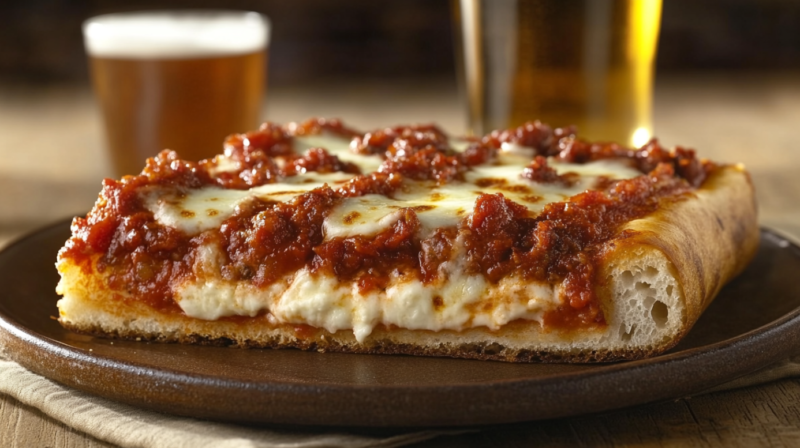
Detroit-Style
Cheese goes directly on top of the dough, edge to edge. That’s not an accident—it’s the reason the edges caramelize so beautifully.
The cheese melts down the sides and crisps up where it hits the pan.
Traditionally, Detroit-style uses Wisconsin brick cheese (super melty and rich), though many pizzerias blend it with mozzarella.
This cheese is high-fat and gives that signature gooey, crispy-cheesy bite.
Sicilian
With Sicilian pizza, cheese is added on top of the sauce, and it’s usually mozzarella, often shredded or sliced.
It’s applied more conservatively, and the edge doesn’t get covered, so you won’t get that caramelized crust like you do in Detroit.
Key Difference
- Detroit = cheese under the sauce, all the way to the edge
- Sicilian = cheese over the sauce, more centralized, no crispy edges
Sauce – Under or Over?
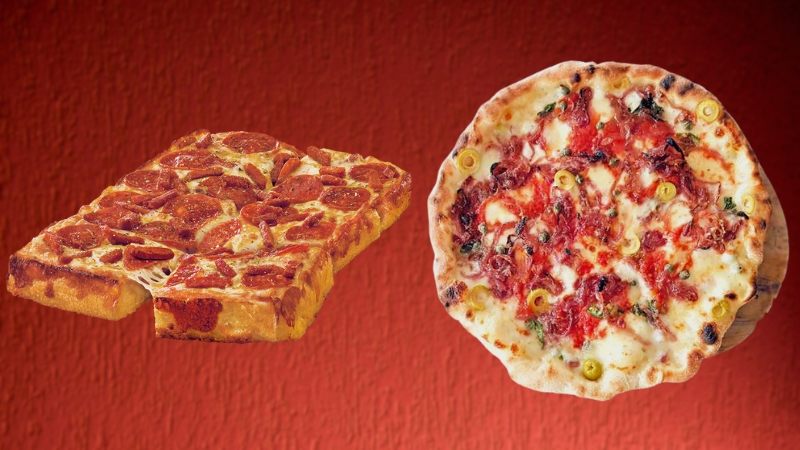
Detroit-Style
Detroit-style pizza flips the classic sauce-cheese order. The sauce goes on top, either in thick stripes or ladled on after baking.
It’s often called “red top” because of this.
The sauce is usually robust, tangy, and lightly sweet, balanced out by the richness of the cheese underneath.
Sicilian
In Sicilian pizza, the sauce goes directly on top of the dough, then the cheese goes on top of the sauce.
It’s the traditional layering style.
The sauce is typically more herby and rustic, sometimes chunkier depending on the region.
If you’re a sauce-on-top kind of person, Detroit is for you. if you like your sauce soaked into the dough a bit, sicilian’s got your back.
Cooking Method & Time
Both pizzas are baked in pans, but the techniques differ.
Feature
Detroit-style pizza
Sicilian pizza
Oven temperature
450–500°f
400–425°f
Pan type
Well-oiled steel pan
Standard baking tray or sheet pan
Baking time
12–15 minutes
20–30 minutes
Crust result
Crisp bottom and caramelized sides
Soft, airy, evenly baked dough
Proofing
Usually baked after one rise
Often includes a second rise in the pan
Time efficiency
Faster—great for weeknights
Slower—better for weekends or meal-prepping
When I’m short on time but want a pizza that still feels special, Detroit-style wins for me. Sicilian needs more patience, especially with the proofing.
Toppings – Traditional vs. Creative
Detroit-Style
Detroit-style pizza is all about going big, going bold, and not being afraid to break the rules. The structure of the crust—crispy on the bottom, chewy in the middle, and loaded with edge-to-edge cheese—can hold up to pretty much anything you throw on top.
You’ll see (and taste) everything from:
- Classic pepperoni (often cupped and crispy)
- Sausage and mushrooms
- BBQ chicken with red onions
- Buffalo chicken with blue cheese drizzle
- Hot honey, jalapeños, and bacon
- Caramelized onions, roasted garlic, ricotta dollops
- Even pulled pork, pineapple, and pesto
One of my favorite homemade combos is a layer of mozzarella and brick cheese to the edge, then roasted red peppers, caramelized onions, spicy hot peppers, and a drizzle of balsamic glaze after baking.
The result? A balance of crunch, richness, heat, and tang that only Detroit-style can handle without falling apart.
Because the sauce is added last or drizzled in stripes, you get the flavor in every bite without your toppings getting soggy. It’s built for experimentation—and trust me, it’s hard to go wrong.
Sicilian: Classic, Simple, and Comfort-First
@andy_cooks Sfincione (Sicilian Pizza) Ingredients – 500g (4 cups) bread flour – 500g (4 cups) durum wheat semolina – 14g (1 tbsp) dry instant yeast – 100ml (7 tbsp) extra-virgin olive oil – 12g (2 tsp) salt – 2 yellow onions, thinly sliced – 10 anchovies – 2 cans (400g each) peeled tomatoes – 200g (7 oz) provolone cheese, diced – 40g (1/3 cup) breadcrumbs – 1 tsp dried oregano – 40g (1/3 cup) finely grated pecorino cheese Method 1. In a stand mixer with a dough hook attachment, combine the bread flour, durum wheat semolina, yeast, and salt. Set to medium-low speed. Once mixed, gradually add 700ml (3 cups) of warm water, mixing for 2-3 minutes until fully absorbed. Add the olive oil and continue mixing for another 3-4 minutes until the dough is smooth. Note that this will be a high-hydration dough, so it will be quite sticky. 2. Turn the dough onto a floured surface and knead for 1-2 minutes until a smooth, tight ball forms. Transfer it to a clean, oiled bowl, cover with a tea towel, and let it prove for about 1 hour or until it has doubled in size. 3. Once the dough has risen, generously brush a full-size sheet pan with olive oil. Place the dough in the pan and gently stretch it to fill the entire surface. Cover again with a tea towel and let it prove for another hour or until doubled in size. 4. While the dough is proving, preheat the oven to 240°C/475°F (fan-forced). 5. In a pan over medium heat, warm 2 tablespoons of olive oil. Add the sliced onions, 4 anchovies, and a pinch of salt. Sauté for 6-7 minutes, stirring often, until the onions are softened and lightly golden. 6. Add the peeled tomatoes to the pan, then add one-third of a tin of water to each empty can, swish, and pour into the pan. Break up the tomatoes and cook over medium-low heat for about 1 hour, stirring occasionally. 7. In a small bowl, combine the breadcrumbs, dried oregano, and grated pecorino cheese. Set aside. 8. Once the dough has risen a second time, remove the tea towel. Drizzle a bit of olive oil over the surface, then evenly press diced pieces of provolone cheese into the dough. Place one-third of an anchovy near each cheese piece, pressing them into the dough. 9. Place the dough in the preheated oven and bake for 12 minutes, until the base is nearly cooked through. 10. Remove the pizza from the oven and spread the prepared sauce evenly over the top. Sprinkle with the breadcrumb, oregano, and pecorino mixture. Return to the oven and bake for an additional 6-7 minutes, until the sauce bubbles and the top is golden. 11. Remove from the oven and let the sfincione rest for 5 minutes before carefully removing it from the pan. Let it cool slightly, then cut and serve warm. #pizza #Sicily ♬ The Message – Instrumental – Dr. Dre
Sicilian pizza, on the other hand, is more of a purist’s canvas. The thick, fluffy dough acts almost like a slice of artisan bread—it’s hearty, soft, and very filling. Toppings tend to be more traditional, minimal, and balanced.
Typical toppings include:
- Tomato sauce and mozzarella (always the base)
- Anchovies (a sicilian staple!)
- Sliced onions
- Black or green olives
- Fresh basil or oregano
- Grated pecorino or parm after baking
It’s usually not overloaded—this style is more about letting the dough and sauce shine. That said, some modern pizzerias are playing with it a little more—adding things like artichokes, sautéed spinach, or even a spicy arrabbiata drizzle. But in general, Sicilian pizza keeps it cozy, nostalgic, and unfussy.
For me, Sicilian toppings remind me of Sunday dinners growing up—warm, hearty, and full of old-school Italian flavor.



